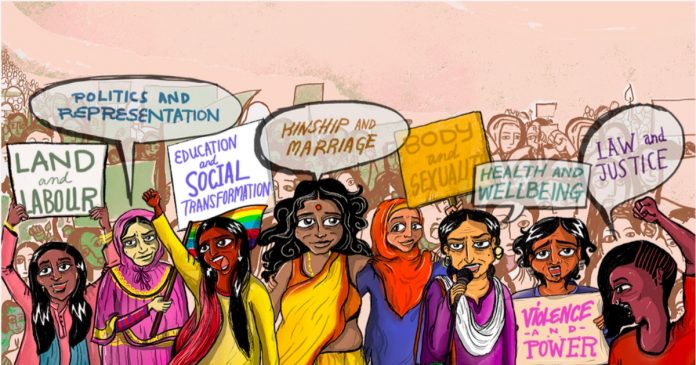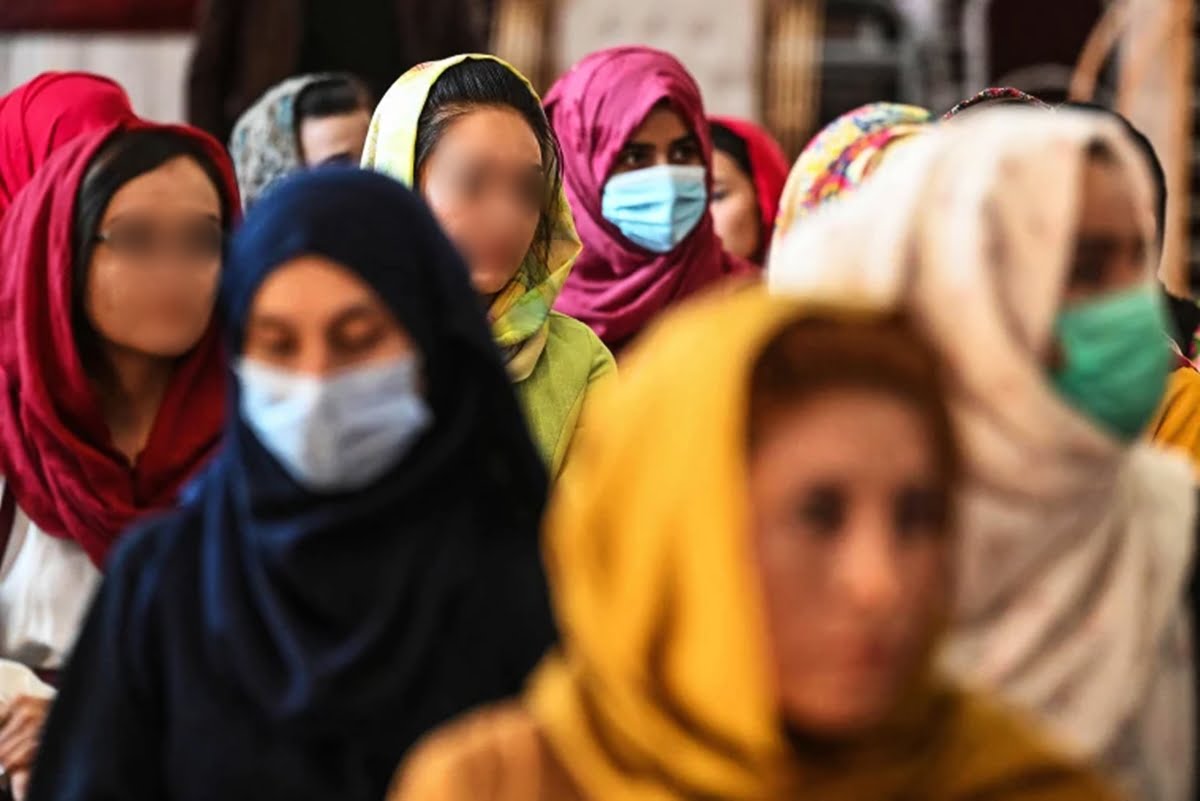After 20 years of conflict, the Taliban finally seized power in Afghanistan. Notorious for their suppression of women’s rights, concerns regarding the safety of women in Taliban’s Afghanistan are being voiced globally. However, the outcry by feminists from all over the world is being overshadowed by one voice: that of the west, particularly America. A dangerous landslide to imperialist rhetoric seems inevitable as the deteriorating women’s conditions are made to seem inseparable from, and by extension a consequence of, the US withdrawal from Kabul.
A CNN op-ed titled ‘America has Abandoned the Women of Afghanistan’ reads “…but one thing is different now: Afghanistan’s women tasted freedom in the last 20 years, and took it upon themselves to rebuild their country.” While the article does point out frequent US co-opting of a feminist agenda, it still firmly believes that American presence helped the condition of women in Afghanistan, reflecting the popularly held view of the West. It is thus quick to allocate the role of a saviour to the American government and people. The American government is, thus, assigned the responsibility to liberate Afghanistan’s women and rescue them from the Taliban. This is a confusing yet dangerous argument.

A CNN op-ed titled ‘America has Abandoned the Women of Afghanistan’ asserts that American presence helped the condition of women in Afghanistan, reflecting the popularly held view of the West. It is thus quick to allocate the role of a saviour to the American government and people.
Amongst a multitude of other factors, this argument arises because feminism is generally considered a product of the Western legacy. In that narrative, third world feminisms then become a mere imitation of the West. And when these various types of feminisms try to diverge from western feminism, they struggle to find legitimacy. An unspoken rule is formed- it is not the East that decides the characteristics and norms of feminism, but the West. The western woman becomes the primary unit of analysis, who’s experiences dictate the courses of feminism.
This is evident in how ideas conceived in the West are transported to the non-West without any alterations to suit the conditions of these new locations. Liberal feminism, inexorably married to consumerism and individualised ideas of empowerment, is a great exhibition of this export.

The division of the world into spatial dichotomies of the West and the East, of the Global North and the Global South, of the First World and the Third world are more than linguistic categorisations of convenience. They arise from a culture of knowledge production that understands the West as what it’s not- the East, the Other. The West is synonymous with human rights, democracy, freedom, feminism, and every quality a nation-state must aspire to be. The East, on the other hand, is underdeveloped, poverty stricken, authoritarian, and violent. It then becomes the mission of the West to transport its good western values onto the nations and states of the east. It must civilise the East, also known commonly as the white man’s burden.
This has two direct consequences. Firstly, this civilising mission has been used to colonise territories in the Global South for centuries. In contemporary times, this manifests itself through a facade of human rights or democracy and often leads to neo-imperialism. Secondly, by associating values such as women’s rights intrinsically to the West, we create for ourselves an inescapable cycle wherein to implement these values we must adhere to the western model of the world.
Also read: Building Transnational Solidarities: How Can Local Feminists Get Involved In Global Politics
There are two main schools of feminism that deal with this issue: Third World Feminism and Transnational Feminism.
Chandra Talpade Mohanty popularised third world feminism in her work ‘Third World Women and the Politics of Feminism’. She employs a powerful critique of western feminism and white feminism and their mischaracterization of Third World women’s oppression as just a worse version of their own oppression: “By subscribing to the cultural imperialist conception of Third World cultures as hopelessly backward and patriarchal, white feminists view Third World women’s oppression as simply worse than that of white women in the West.”
It is true that gender as a category to understand oppression of women is imperative. But in a gendered body’s interaction with its social world, new systems of oppression are often realised. Yet when the complexities of a Third World woman’s oppression is viewed through the lens of a western woman’s experience, her oppression is measured solely in comparison to that of the western woman’s. The role of the nation as the location and historical context to understand and analyse a third world woman’s experience to arrive at new and fresh paradigms is thus an important part of third world feminism.
Third World feminism has been located in several revolutionary nationalist struggles against colonial or imperial powers. Anti-imperialism is one of the core features of Third World feminism. This has often led to the criticism that women are compelled to overlook their gender-based oppression to first confront oppression in other arenas. The employment of the term ‘Third World’ has also amassed criticism. Mohanty herself recognises the dangers of institutionalising terms such as the West and the Third World.
Transnational feminism, on the contrary, gained popularity as a restriction to national territory, like Third World feminism promoted, prevented “a comparative, relational feminist praxis that is transnational in its response to and engagement with global processes of colonization.” In their introduction to ‘Scattered Hegemonies’, Grewal and Kaplan set the foundations of transnational feminism. But much like Third World feminism, this is also fueled by the belief that understanding oppression solely through gender unnecessarily homogenises the diverse experiences of women throughout the globe.

Yet transnational feminism does what Third World feminism falls short of; it connects the historicized particularities of women of the global south to international economic hegemonies. Transnational feminists attempt to understand the material conditions that sculpt women’s lives globally, and consequently offer a critique of economic models of neoliberalism and cultural hegemonies. Transnational feminists are engaged in a comparative understanding of different kinds of patriarchies and assembling coalitions and transnational solidarities.
Transnational feminists identify neoliberal economic hegemony as a threat to the women of the third world. The deregulation of trade and finance, along with the setting up of institutions such as the World Bank and the International Monetary Fund and the advancement of multinational corporations has a dangerous effect on women. Labour exploitation and poverty are direct consequences of a neoliberal world order.
Transnational feminists identify neoliberal economic hegemony as a threat to the women of the third world. The deregulation of trade and finance, along with the setting up of institutions such as the World Bank and the International Monetary Fund and the advancement of multinational corporations has a dangerous effect on women. Labour exploitation and poverty are direct consequences of a neoliberal world order.
Also read: Can Local Feminist Agencies Hold International Financial Institutions Accountable?
Transnational feminism then seeks to form solidarity amongst women living under diverse patriarchies united under the global system of economic exploitation. It doesn’t reject third world feminism but provides it with its next logical extension.
Moving away from the West as the location for feminist knowledge formation as well as activism is an essential part of decolonising feminism. When we stop informing our worldview in compliance with the West’s, we discover a worldview that suits our needs the best; that fights for our needs the best.
This is an indispensable part in the process of liberation of women of the East, the Global South and the Third World.
Featured image source: NBC News
About the author(s)
Halima is a History graduate from Lady Shri Ram College for Women. She has worked with grassroots political parties as well as international organisations. Her research interests are feminist theory, foreign policy, and area studies. She is currently doing a Master's in International Relations. In her free time, she passionately advocates for Phineas and Ferb songs for Grammy's.




